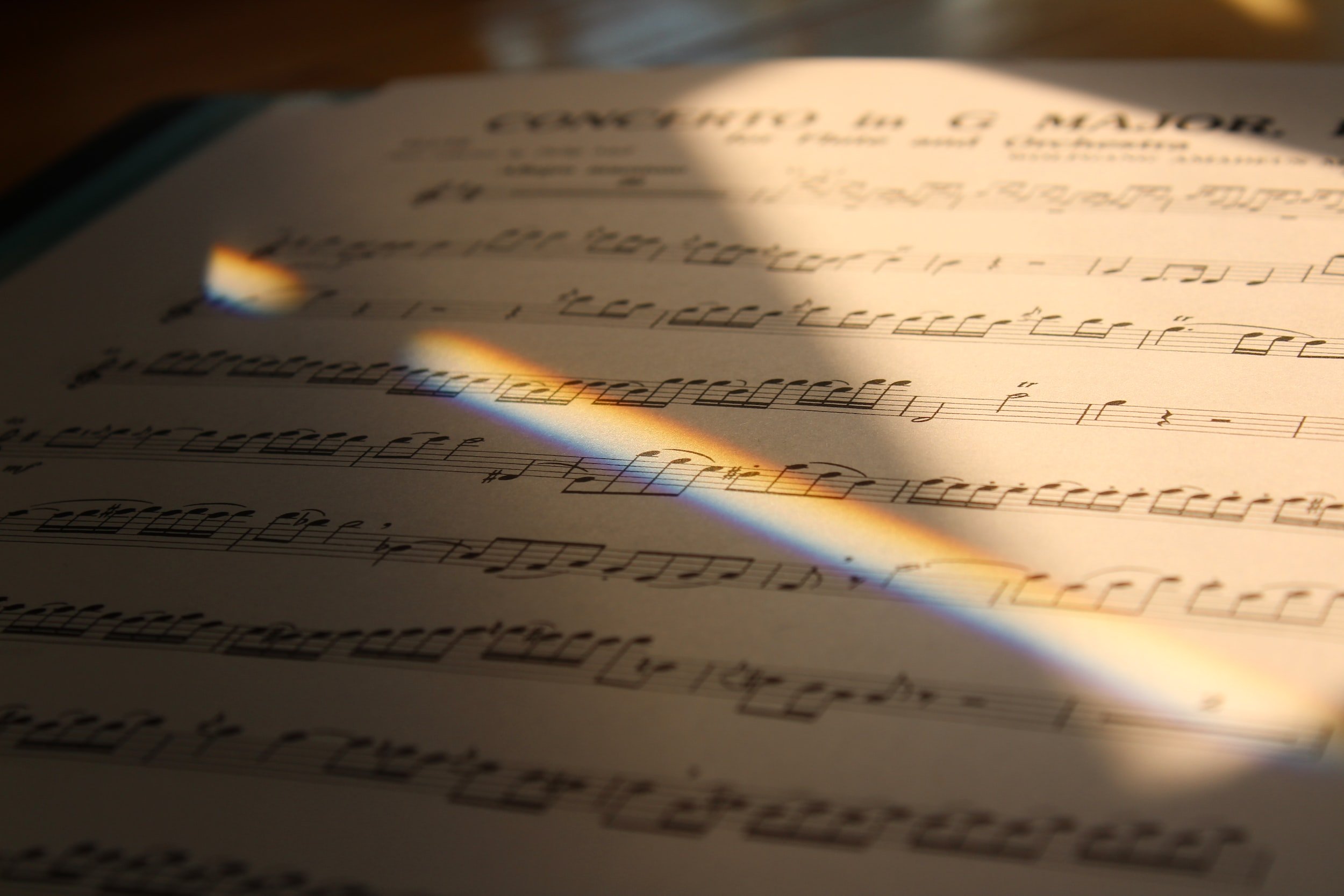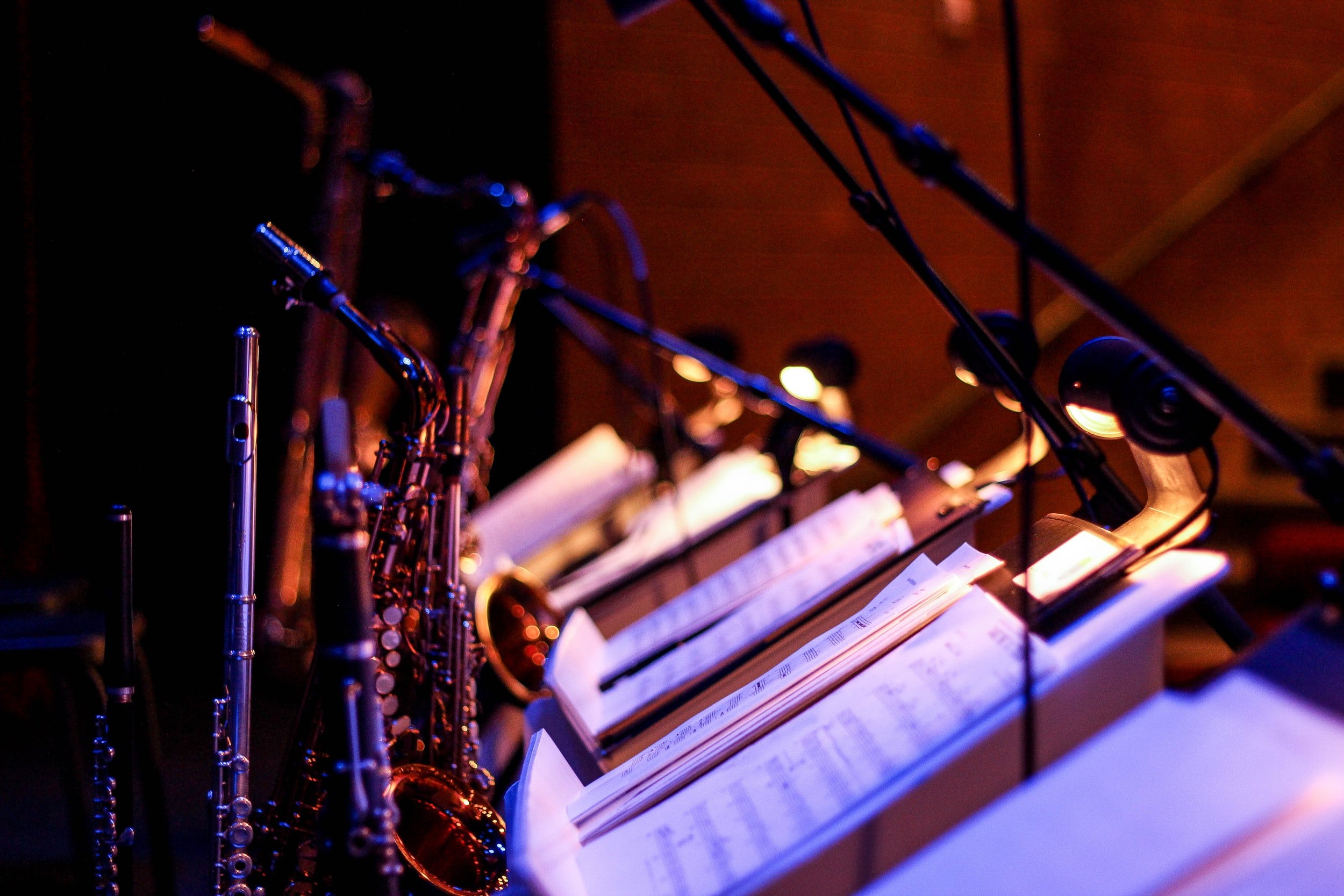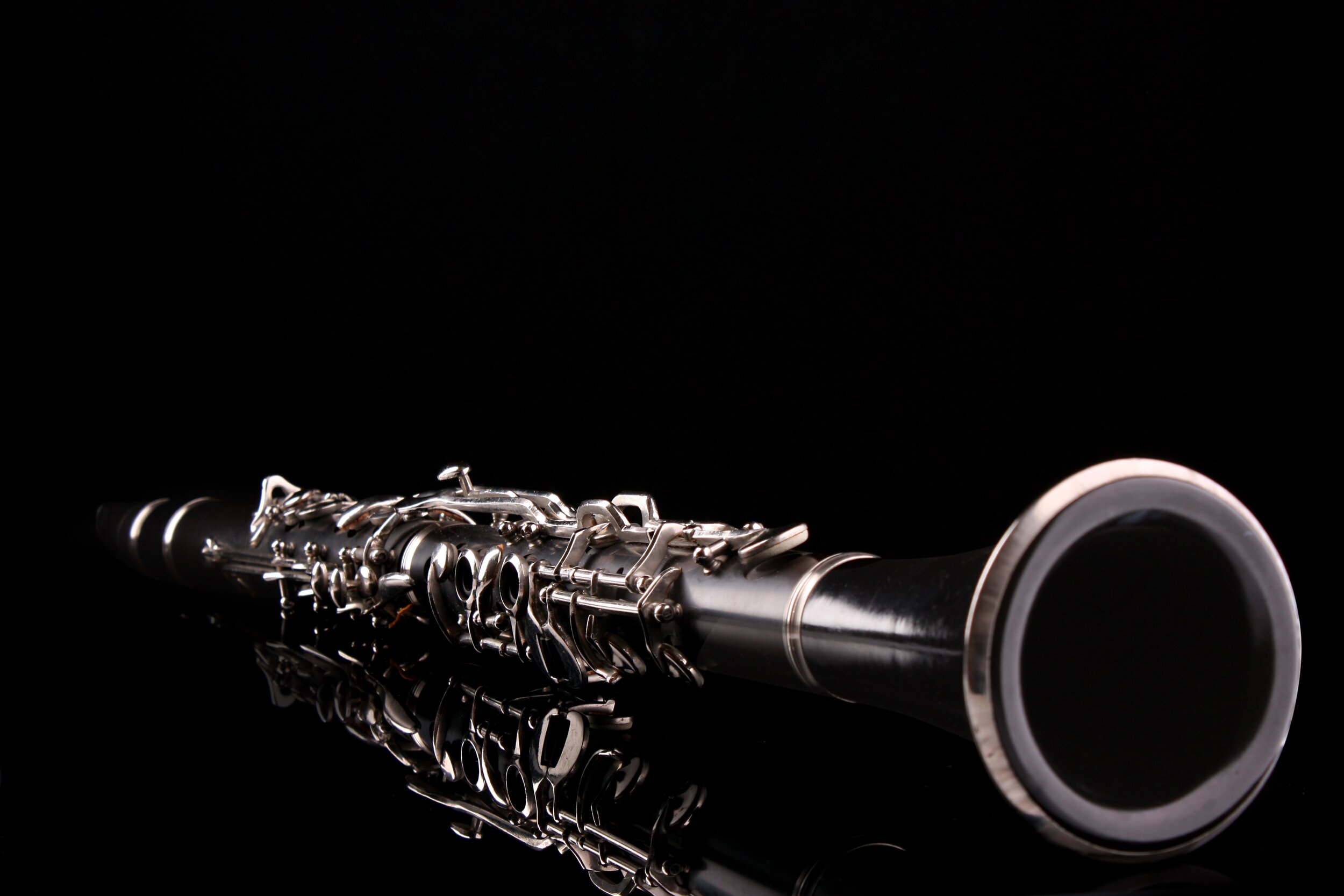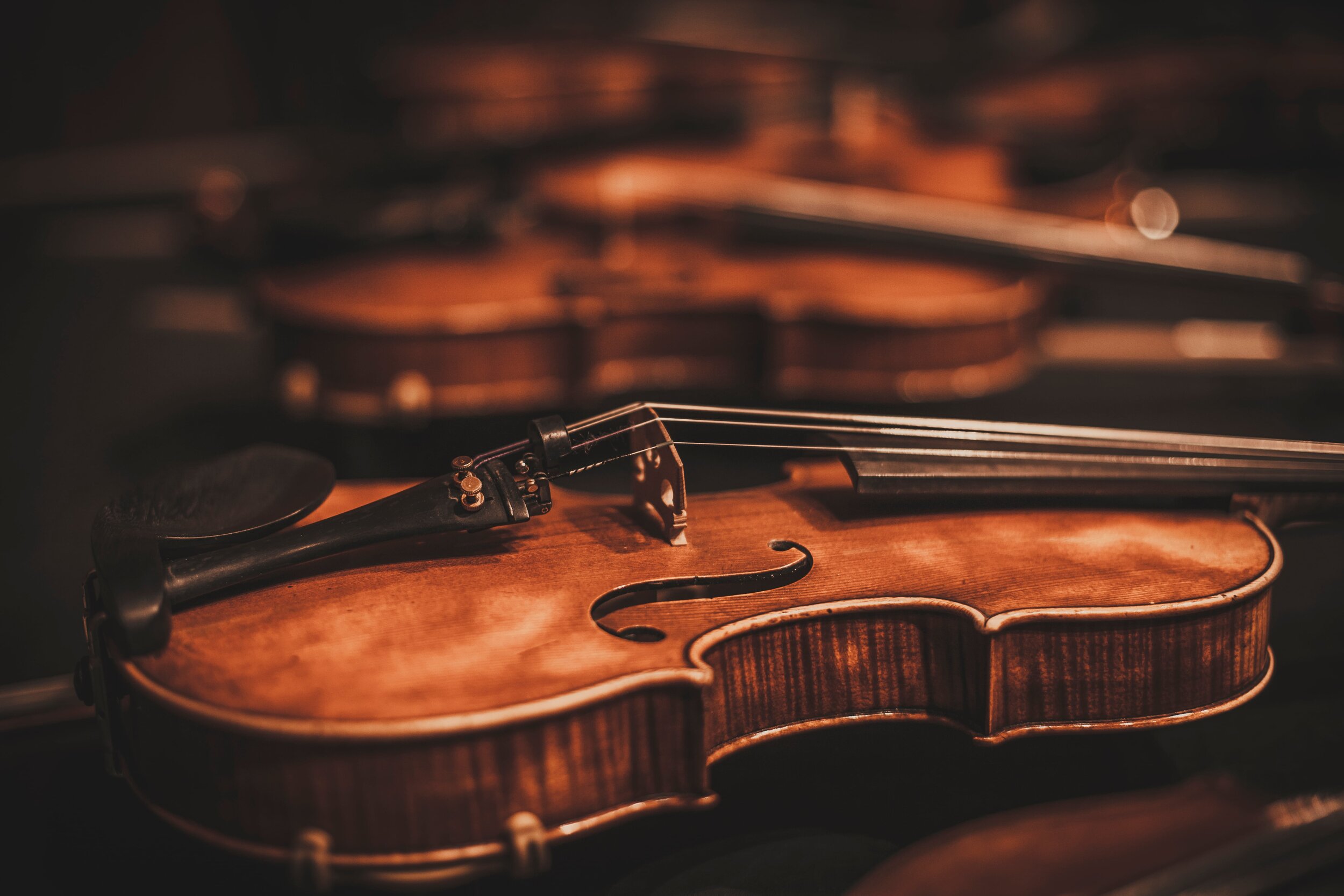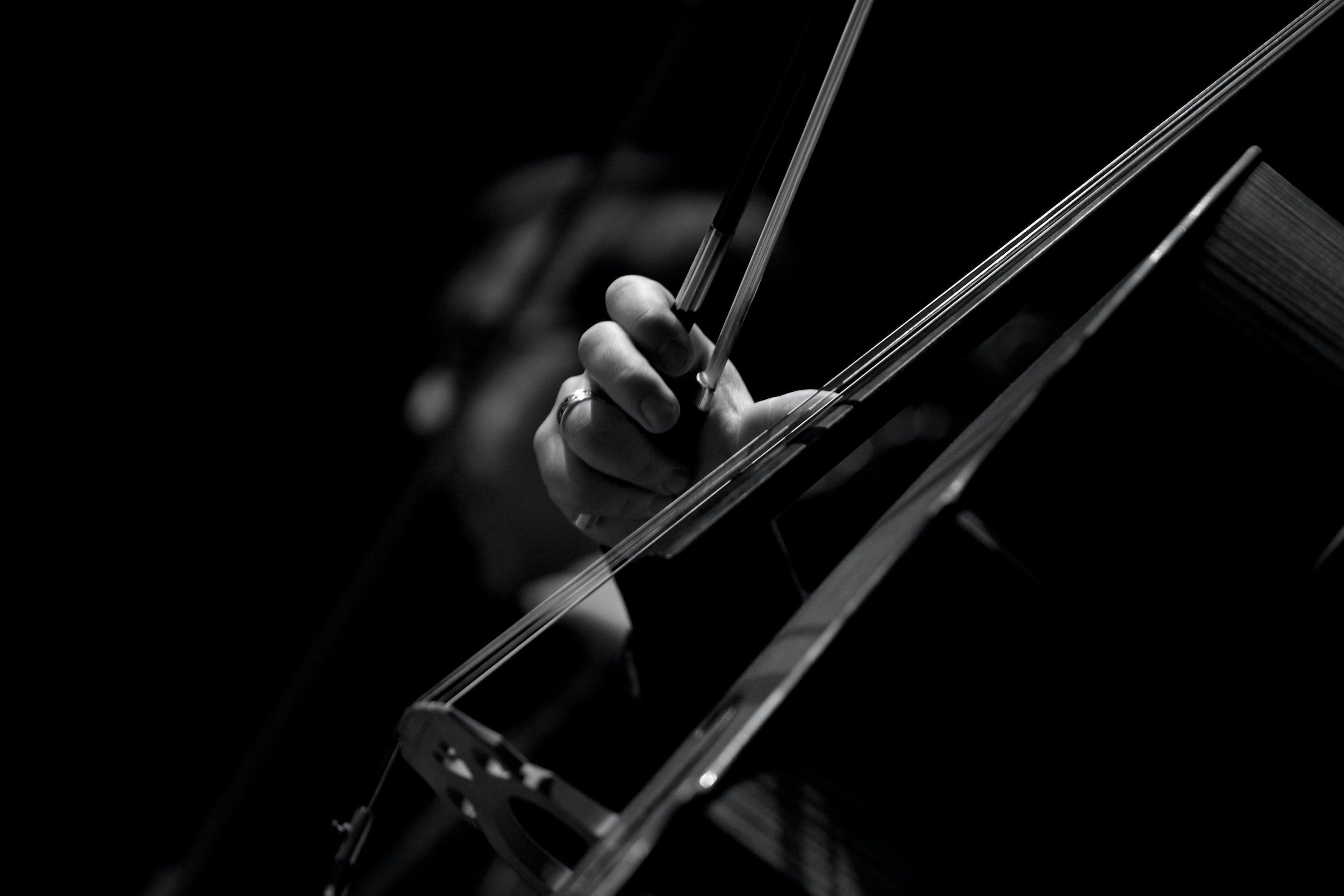Brass | Scoring
In the following excerpt, the brass section forms the core of the climax of Strauss’s Till Eulenspiegel. Here the brass is organized in a variety of configurations, ranging from contrapuntal balancing to homophonic power chords.
In measures 540 to 543, horn 1 and 2 a2 project the principal line; trumpet 3 forms a triadic trio with the 3 and 4 horns, imitated by the 1st trombone. Note how Strauss’s use of rests gives transparency to the counterpoint. The 2nd trombone adds an octave doubling in measure 543, strengthening the crescendo. In measure 544 the 1st and 2nd horns reach the top of their range, given security by the unison doubling of the 3rd trumpet. This is followed by the explosive (and somewhat precarious) entry of the 1st and 2nd trumpets, doubling the einforced horns an octave higher. The bass trombone is called upon to double the tenors an octave lower, bolstered by the tuba on the long notes but not the staccatos; this selective doubling strengthens the impact of the tuba’s contribution. The pairing of the horns a2 lasts through measure 547, supported at the unison by the trumpets in measure 546.
Strauss: Till Eulenspiegel, m. 540-573, brass section only.
Our notation gives all instruments at concert pitch, and replaces Strauss’s tenor clef with bass clef for the tenor trombones. Strauss’s score calls for F trumpets, written a 4th lower than sounding, but these are virtually extinct, and are replaced by C or Bb trumpets in modern orchestras.
Strauss’s doubling strategy changes in measures 548-551; here the 3rd and 4th horns play a2 doubled an octave higher by the 3rd trumpet, while the 1st and 2nd trumpets continue their unison doubling of the 1st and 2nd horns. Note how the selective doubling by the 2nd trumpet emphasizes only the descending motive. The chords in measure 551-553 feature the strongest brass doubling, octaves between the timbrally matched trumpets and trombones. The tuba doubles the bass trombone an octave lower to provide the sturdiest of bass lines. It may seem strange that the 3rd trumpet is the highest sounding brass instrument in these measures, but this is the result of a linear approach to scoring. The M2nd played by the four horns a2 in measure 553 is, in this range, arguably the strongest horn sound available, and ties together all the components of this model of a ff brass sonority. The agile brilliance of the trumpet trio balances perfectly against the tripled trombones in measures 555-557, while the selective octave doubling of the tub underscores the five-note motive.
All the horns and trombones are assigned to a single unison line in measures 558-560, spreading into octaves and some selective doubling including the tuba in measures 561-562. All of this weight is needed to give this line prominence against the brilliant succession of triads in the trumpets. Note Strauss’s use of accents to highlight the six-note motive in measures 558-560; in measures 561-562 this highlighting is reinforced by the use of rests and re-entries of the threenote motive. In this system Strauss re-distributes the staff assignment of his horn section, making the a2 doubling less cumbersome to notate; the assignment of high and low horns is traditional in measures 561-562, but seems less appropriate in measure 566, where the “low” horns jump to a high range. The balance of 2 horns a2 to match one trumpet may be observed in 563-565.
Strauss orchestrates his crescendo into measure 567 by thinning out his trumpet section in measures 563-565, and having the 2nd and 3rd trumpet re-enter in 566. This set-up is enhanced by the rising tuba line beginning in 563, doubled at the octave and then at the unison, and capped by the re-entry of the bass trombone in 566. The deliberately chaotic lines and texture of measures 563-566 resolve in the straight-forward and powerful brass writing of measures 567-572: horns a2 doubled at the unison by trombones and by trumpets an octave higher over the pedal tone in the bass trombone and tuba. The 3rd trumpet’s rhythmic repeated note is doubled by the rest of the orchestra; only the brass have the moving lines, which ride over the orchestra with power to spare.
More brass-related chapters from Extreme Orchestration
All Extreme Orchestration chapters
All Woodwind Pages
On This Page











